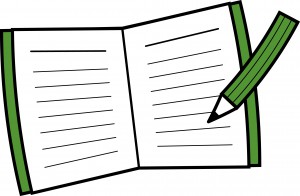If you are reading this, you might be someone who is interested in learning how to speak Japanese. If so, you’ve come to the right place. If you follow this roadmap, we are confident you will become fluent in speaking Japanese. From our research, we have found that this is the fastest way. However, it does not mean this is the easiest or the most enjoyable way. We highly recommend you to proceed only if you really want to learn how to speak Japanese as fast as possible.
Overall Process of How to Become Fluent in Speaking Japanese
What is Speaking Japanese (or a Language)?
Speaking Japanese is similar to playing a sport, especially for the process of being a good player and speaker. There are only three factors; Knowledge, Practice, and Experience. Suppose that people have read several how-to books on basketball and know the rules and the theories behind them, do you think they could sink a shot on the first try? Suppose that a basketball team has practiced shooting a lot, but has never experienced actually playing real games, do you think they could win their first one? This is applicable for languages as well.
| Knowledge | Practice | Experience | |
|---|---|---|---|
| Basketball | Rule, Theory | Shooting, Passing, etc. | Participation in games |
| Japanese | Writing System, Vocabulary, Grammar | Pronunciation Practice, Read-Aloud Method, Instantaneous Composition Method | Interactions with native speakers, Intensive and Extensive reading |
However, the importance of the practice is often ignored in languages. As far as we know, a lot of people go straight into interactions with native speakers after acquiring some of the grammar and the vocabulary. This is still good, but not the fastest way. You have to immerse yourself in what you know. That way, you can use that knowledge in interactions with native speakers almost effortlessly. Therefore, this roadmap will focus on the Practice section
What is the Knowledge for Speaking Japanese?
Writing System
Japanese has three writing systems; Hiragana, Katakana and Kanji. The large number of characters is one of the reasons why it is difficult for English speakers to learn Japanese. Some of learners have asked us, “Is it possible to learn Japanese without learning the writing system because I just want to speak Japanese?” The answer is unfortunately, no. Even if you try to learn only by oral instruction, learning with both oral and visual information will take you to the next level much faster. That is why learning the Japanese writing system is fundamental for speaking Japanese.
Vocabulary
Any language consists of successive combinations of words. Your communication ability will depend on how many words you know. If you know medical words in Japanese, you will be able to even communicate with a doctor in Japanese. Although there is no end to acquiring vocabulary, the initial stage of learning requires you to memorize approximately 1,000 to 1,500 words. Then, you will increase your vocabulary spontaneously while learning and using Japanese.
Grammar
Grammar is the rules you follow when you combine the words you have memorized. Those words will be a sentence when it is combined based on the rules in place. One of the Japanese typical grammatical rules is the order of the words. For example, Japanese words are generally combined in this way; Subject + Object + Verb as opposed to the English word order; Subject + Verb + Object. It may look strange and difficult. However, once you have gotten used to this rule, it gets easier to make sentences in Japanese. Grammar as a foundation enables people to communicate smoothly by following common rules.
In summary, speaking Japanese is combining words based on the grammar by using your knowledge. And the speed is the fluency with which you speak Japanese. In the Practice section, you will learn how to acquire the ability to combine words as fast as possible.
What is the Practice for Speaking Japanese?
The good news here is that although speaking Japanese is complex, what you need to practice is very simple. There are only three kinds of practice; Pronunciation Practice, the Read-Aloud Method, and the Instantaneous Composition Method. The details will be explained in the program respectively, so let us tell you the overall concept. Again, being fluent in speaking Japanese does not only mean having the knowledge, but also having a good command of that knowledge. Through the following practice and methods, you will be able to acquire that ability.
Pronunciation Practice
Pronunciation practice will give you not only the ability to clearly say what you want to say but also the ability to recognize what others say. Each language has its own sounds. If you could not recognize some Japanese words, it would probably contain sounds you have never heard before. Understanding how the sounds are made will improve your listening and speaking.
Read-Aloud Method
The Read-Aloud Method will give you general language ability, like physical strength. This is one of the best traditional learning methods. It is said that Heinrich Schliemann, excavator of Troy, was able to speak 16 languages in his lifetime because of reading a great deal aloud. The more you will read aloud Japanese, the better you will be at speaking Japanese. Just like the more you run or train, the better you will play in a sports game.
[adsense]
Instantaneous Composition Method
Instantaneous composition will give you the ability of responsiveness. In conversations with others, you have to instantaneously respond to him or her on various topics. Just like a professional basketball player, can shoot a basket without giving it too much thought, you will also be able to respond to certain topics in the same way in Japanese. This method will give you that ability of responsiveness.
What is the Experience for Speaking Japanese?
Language is a tool to communicate. One the other hand, even if you know a lot of vocabulary and can speak fluently, it does not necessarily mean that you are a good communicator. In my case, I am a Japanese person learning English, when I tried to say something nice about a friend of mine; I said to her, “You are cute”. Do you think that this is a proper complement? Afterward I came to learn that “cute” could be interpreted as “like a child”, although “かわいい (cute)” does not have any negative nuance in Japanese. This is one example of cultural differences. You have to experience Japanese culture in order to grasp natural usage.
Interactions with Native Speakers
Interacting with native speakers is the best way to acquire experience. During or after the above practice, you will be able to communicate better with native speakers. Thus, you should jump into an environment where Japanese is spoken. You will realize language is actually evolving every day such as gaining, usage, coinage and new words, and phasing out obsolete or old words. Then, you will be able to make your Japanese sound more natural. However, please note, this experience section will work well only after you have done the above practice sufficiently.
Intensive and Extensive Reading
You can grasp Japanese natural usage by input learning as well. When it comes to learning Japanese, you’re fortunate because there are a lot of interesting resources such as manga, books, animations, and dramas. You may feel that input learning doesn’t have to do with speaking Japanese. However, you should realize the effect of the ability to correctly understand sentences and the experience to expose yourself to tons of expressions. That’s significant. Because of that, you will be able to make your speaking more lively.
How Long It Takes to Become Fluent in Speaking Japanese
The Foreign Service Institute (FSI) created a list to show the approximate time you need to learn a specific language as an English speaker. According to that, Japanese requires you to learn for 2200 hours. Language proficiency can be divided into six levels based on the criteria of the Common European Framework of Reference for Languages (CEFR). Let’s take a look.
| CEFR Level | Level Name | Description | Time (Hour) | Aim |
|---|---|---|---|---|
| C2 | Proficiency | Can express him/herself spontaneously, very fluently and precisely, differentiating finer shades of meaning even in the most complex situations. | ||
| C1 | Advanced | Can express ideas fluently and spontaneously without much obvious searching for expressions. | 2200 | Work with Japanese |
| B2 | Upper intermediate | Can interact with a degree of fluency and spontaneity that makes regular interaction with native speakers quite possible without strain for either party. | 1320 | Work with Japanese |
| B1 | Intermediate | Can produce simple connected text on topics that are familiar or of personal interest. | 720 | Live in Japan |
| A2 | Elementary | Can communicate in simple and routine tasks requiring a simple and direct exchange of information on familiar and routine matters. | 480 | Travel in Japan |
| A1 | Beginner | Can interact in a simple way provided the other person talks slowly and clearly and is prepared to help. | ||
|
||||
The “work with Japanese” aim is in both the C1 and B2 columns. That means, if your target is working in Japan or a Japanese company in your country, it is possible to do so at these levels. Of course it is better to have advanced Japanese ability. However, if your language proficiency is at B2, you may still get a job offer which is something like being in charge of international affairs where you would need to communicate with your boss or coworkers in Japanese. Even though the required hours to reach the advanced level is 2200 hours, you can achieve other targets such as working in Japan, or living in Japan, in less time.
The Breakdown of the Necessary Time to Become Fluent in Speaking Japanese
| Aim | Knowledge Section | Pronunciation Practice | Read-Aloud Method | Instantaneous Composition Method | Experience Section | Sum (Hour) |
|---|---|---|---|---|---|---|
| Can travel in Japan | 230 | 20 | 110 | 110 | 10 | 480 |
| Can live in Japan | 230 | 20 | 222.5 | 222.5 | 25 | 720 |
| Can work with Japanese | 230 | 20 | 422.5 | 522.5 | 125 | 1320 |
This table shows how long you need to learn in the Knowledge, the Practice and the Experience section for each aim (*we show the practice section in detail). Now, you know what to do and how long you need to do it for and will know how to do it on the main programs.
Conclusion
The purpose of this article is to get you to imagine how you will become fluent in speaking Japanese by showing the overall process. As the saying goes, “There is no royal road to learning”, you have to practice for a certain amount of time. However, if you don’t make mistakes selecting ways to practice, you will eventually achieve your goal. That’s a good aspect of speaking Japanese. We define such a steady way as the fastest way. You should follow a realistic way, not a magic one. Let’s learn Japanese with us!
Note
Regarding the estimate; the time you need to learn for each aim, we calculated them by converting the CEFR, FSI, and ACTFL ratings based on the above-mentioned sources. However, it will vary depending on your aptitude, knowledge, e.g. having an understanding of Chinese already, experience, and motivation. Also, living or working in Japan depends on several external factors and hence, we cannot ensure you will achieve your goal in the allotted time, even if you have studied very hard. These are to be considered as tools to guide you through your Japanese learning and we hope you keep that in mind.
Recommended Links
- Detailed Learning Flow from the Beginning
- Special Course: How to Learn Japanese for Beginners
- Materials for Wasabi Japanese Pronunciation Lessons
- Fairy Tales and Short Stories with Easy Japanese
- Japanese Grammar with Instantaneous Composition Method
- Complete Roadmap: How to Speak Japanese
- Wasabi Learning Community on Facebook







